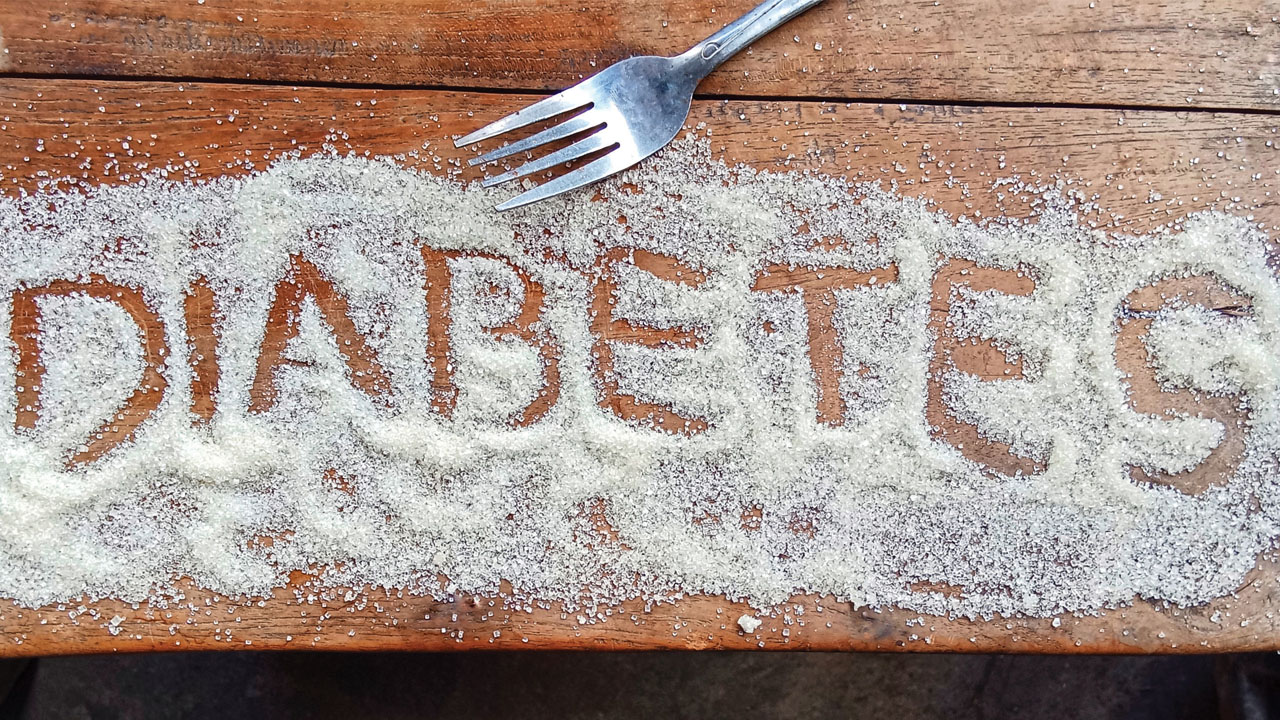In OTC
Follow this topic
Bookmark
Record learning outcomes
It’s estimated that more than 5.6 million people in the UK are living with diabetes – around a fifth of whom may not even know it yet. And the number of cases looks set to keep soaring, with an article in The Lancet last year predicting that 1.31 billion people worldwide could have diabetes by 2050.
However, despite its rising prevalence, the condition is one that patients may not immediately spot. So, with World Diabetes Day this month, 14 November, it seems like a fitting time for a deep-dive into the disease.
What is diabetes?
According to the World Health Organization, diabetes is “a chronic, metabolic disease characterised by elevated levels of blood glucose (or blood sugar)” which occurs “either when the pancreas does not produce enough insulin or when the body cannot effectively use the insulin it produces”. Over time, raised blood sugar can cause damage to various parts of the body. There are several types of diabetes, including the below:
“Type 1 diabetes is an autoimmune disease where the body attacks and destroys the cells that produce insulin, which is needed to move glucose in our blood stream into our body’s cells to make energy,” says Sarah Tutton, chief executive of the Diabetes Research & Wellness Foundation (DRWF).
“It can develop suddenly and whilst the underlying cause is unknown, family history may play a part.” This type of diabetes currently cannot be prevented, she continues, and is treated with insulin therapy.
Type 2 diabetes is the most common form, accounting for more than 90 per cent of diabetes cases in UK adults. With this, “the body still produces some insulin but not enough, or the insulin that is produced is not used efficiently by the body which becomes insulin resistant,” explains Sarah. Type 2 diabetes can be delayed or prevented, she adds. “It is often associated with obesity and lifestyle factors, but there are many variables which increase the risk.”
Recent findings from the Diabetes Remission Clinical Trial (DiRECT), published in The Lancet Diabetes & Endocrinology earlier this year, found that it is possible for some people with type 2 diabetes to achieve remission for at least five years through weight management. However, points out Sarah, “while the report finds that long-term remission is possible for some, which comes with lasting health benefits, it is also challenging for others to maintain weight loss and stay in remission”.
Gestational diabetes can develop during pregnancy, and affects around five per cent of expectant mums in the UK. In many cases, the condition usually goes away after the birth, though the patient will be at higher risk of developing type 2 diabetes in the future.
Pre-diabetes occurs when a patient has above normal blood sugar levels that are not currently high enough to be classed as diabetes. This increases their chances of developing type 2 diabetes, though the risk can be reduced with positive dietary and lifestyle changes.
“Some pharmacies may offer diabetes screening tests, and they also provide authoritative and reliable advice”
A patient’s perspective
Claire Howells, a staff nurse from the West Midlands, knows all too well the complications that the condition can cause. She was diagnosed with type 2 diabetes almost 30 years ago, after taking a blood test because of her family history. “They tested me because my mum had just found out that she was diabetic, and my grandad and aunty had it as well.”
Her daily routine involves giving herself at least four injections a day: “I have a long-acting insulin, and then when I eat, I have to administer a fast-acting insulin. I get it on prescription from my GP and collect it from the pharmacy. Every time I eat, I have to calculate how many carbs I’m consuming, so I know how much insulin to inject. I’m also on prescribed medication called dapagliflozin, which protects my kidneys and helps lower my blood glucose.”
Keeping her blood sugar stable is a delicate balancing act. “If my blood glucose falls too low, I get shaky and sweaty, and I can get a headache. But if my blood sugar is high for a long period of time, that can lead to nerve damage, called neuropathy.”
It was this nerve damage that led to Claire having two toes amputated in separate incidents. “The first time, it started out as a blister, but I didn’t feel it, and then it turned into an ulcer. On New Year’s Day, I went into work in a nursing home and had to change my dressing; I looked at my toe and thought ‘that looks blacker than last time’. I got another nurse to examine it, and she sent me to hospital. It was gangrene, which can spread to other parts if you don’t act quickly.
“After three months, I went back to work, but because I was on my feet a lot I ended up with a wound on the bottom of my foot. I got an infection in it, which spread – and then I ended up with an infection in the bone of my toe. But because I have diabetes, I couldn’t feel it.”
Don’t forget feet
Diabetes can lead to poor circulation and nerve damage, both of which can affect feet. Patients should have a foot review with a healthcare professional at least once a year, and also monitor themselves closely. “I have my feet tested with a monofilament to see what I can feel,” says Claire Howells, a staff nurse from the West Midlands. “The tester asks me to close my eyes, then touches different areas of the foot, and I tell them whether I can feel anything. They also tell me to check my feet daily for blisters, broken skin or other issues.”
To help reduce the risk of problems, general tips include:
- Washing (but not soaking) feet each day using warm water and a mild soap, before drying carefully
- Moisturising dry skin on the feet daily to prevent cracking, avoiding the area between the toes
- Quitting smoking
- Smoothing toenails carefully using a nail file to get rid of sharp edges
- Visiting a podiatrist/GP for corns (diabetes patients should not attempt to self-treat these)
- Wearing well-fitting shoes. “I had orthotic shoes made at the hospital which are deeper and wider,” says Claire.
“Taking good care of your feet is important,” she adds, “and if you have any problems, they advise you to go to hospital if you can’t get hold of your foot health team”.
What are the symptoms?
These can be hard to spot, especially in the early stages. In fact, figures published earlier this year by the Office for National Statistics suggest there may be around one million adults in England with undiagnosed type 2 diabetes.
“Both types of diabetes share common symptoms like needing to pee a lot; being really, really thirsty; feeling more tired than usual and blurry vision,” says Sarah. “However, the symptoms of type 1 diabetes tend to appear very quickly – for instance, fast weight loss – whereas the symptoms of type 2 diabetes can develop over a long time, and can often be missed until the disease has progressed and someone is experiencing complications.”
Patients showing signs of diabetes should see their GP as soon as possible. In other cases, where people don’t have noticeable symptoms, the condition may be picked up during routine blood tests.
Over time, unstable blood sugar levels can lead to serious damage of the blood vessels, says Sarah, which in turn will prevent the nerves from working properly. This can increase the risk of heart disease, kidney disease and eye problems, as well as loss of feeling in the hands, legs and feet.

Life-transforming tech
A diabetes diagnosis can come as a shock, and patients may find that their new routine takes some getting used to. However, ongoing developments in treatments and technology aim to make management easier.
“Without a doubt, advances in technology have had a huge impact for many people living with type 1 and type 2 diabetes in recent years – from blood glucose meters and continuous glucose monitors (CGMs) to insulin pumps and smart insulin pens, right up to the more recent advances such as closed loop systems,” says Sarah. “These devices provide more flexibility in day-to-day life, real-time information which means better blood glucose control, reduction in risk of complications and improved quality of life.”
For Claire Howells, a staff nurse from the West Midlands (see boxout), this has been a game-changer. “I have a blood glucose monitor, where you have to finger-prick, but I also use a CGM,” she explains. “I wear it all the time: it goes on the back of my arm, like a piece of plastic with a needle attached, and I can’t feel it unless I knock it.
“It reads my blood sugar every five minutes and sends the results to an app on my phone. Then I really only use my blood glucose monitor if the results from my sensor don’t match the way I’m feeling. Before they bought the CGMs out, if I was going to do exercise or drive anywhere, I would do a finger-prick check, which was very time-consuming. Now it’s all on the phone and gives me much more freedom.”
Pharmacy’s role
There are many ways pharmacy teams can support patients in the community. “Some pharmacies may offer diabetes screening tests, and they also provide authoritative and reliable advice on how to optimise treatment, helping people take a proactive approach to self care,” says Sarah.
The NHS website outlines a number of helpful lifestyle steps for people with diabetes, including eating healthily and taking regular exercise – “although you have to keep an eye on your blood sugar”, says Claire – as well as attending check-ups, stopping smoking and cutting down on alcohol.
“Pharmacy teams can also help by directing people to sources of information, such as charities,” says Claire. “And let patients know that there is peer support out in the world if they need it.”
Finally, staff can play an important role by debunking some of the many myths that persist. “One of the most common misconceptions that we still hear is that people with diabetes have either eaten too much sugar or can’t eat sugar,” says Sarah. “This is clearly not the case, especially with type 1 diabetes, which is an autoimmune disease and not related to lifestyle choices. It’s important for people to report on ‘diabetes’ correctly, referring to type 1 or type 2 diabetes.
“Another myth is that type 2 diabetes is ‘the mild type’. Diabetes is never mild, but it can be managed effectively, and part of this management is to maintain a healthy and active lifestyle, enjoying everything in moderation. There is lots of misinformation available online which is something that we continue to address, and specifically why we recommend sourcing information from reputable organisations, such as the NHS website (nhs.uk) or the Diabetes Research and Wellness Foundation website
(drwf.org.uk).”

Taking regular exercise is recommended for those with diabetes – though diabetics should keep a close eye on their blood sugar.
“1.31 billion people worldwide could have diabetes by 2050”
When is it an emergency?
Diabetic ketoacidosis (DKA) can occur when a lack of insulin means the body is unable to use glucose for energy and begins to break down fat instead. This causes “harmful ketones to build up in the blood,” explains Sarah Tutton, chief executive of the Diabetes Research & Wellness Foundation (DRWF). Symptoms may include feeling thirsty; needing to urinate more frequently; vomiting, nausea, stomach pain and/or diarrhoea; blurry vision; fruity-smelling breath; deep breathing; drowsiness and confusion. These can develop swiftly – usually over 24 hours, says the NHS, though it can be even quicker – and urgent medical attention is vital.
“If you are diabetic and don’t know what your ketone levels are, but you’re experiencing symptoms – or you’re with someone who has diabetes and is experiencing these symptoms, particularly if drowsy and confused – call an ambulance or go to A&E,” says Sarah. “People with diabetes often carry emergency identification which will alert someone [to their condition]. This is helpful if speaking with the emergency services.”
Hypoglycaemia, sometimes referred to as a hypo, can also be a medical emergency. This occurs “where the blood glucose level is lower than normal”, says Sarah. “Most people with diabetes will recognise the onset of a hypoglycaemic episode, as they will experience warning signs which give them the opportunity to remedy the situation.” These can include, among other symptoms, sweating, shaking, hunger, weakness/faintness, confusion, blurred vision, a rapid pulse or palpitations. “However, some people with diabetes do not have hypo awareness symptoms,” Sarah continues, which can put them in “a life-threatening situation. If unresponsive,
call 999”.
Hyperglycaemia, meanwhile, occurs when the blood glucose level is too high. Slightly high blood sugar for a short period is not usually serious. However, it can cause bigger problems if it gets very high, or stays elevated for a long time – potentially leading to nerve or eye damage, or diabetic ketoacidosis.
Keep in mind that diabetes also increases the risk of other health problems, from eye conditions to heart disease – so if patients are concerned about their health in any way, they should seek prompt medical attention.

Any customers who report blurry vision – a symptom of type 1 and 2 diabetes – should be referred for blood tests.

